Local Pack SEO: What Is It & How to Rank for It?
Editor’s Note: This post was originally published in May of 2024 and has been updated for accuracy and comprehensiveness.
A local map pack (Google local pack, Google pack, snack pack, or map pack) is a feature in the search results that shows the most relevant businesses based on a searcher’s query.
It helps users find nearby businesses that can meet their needs.
Google displays three listings (businesses) in this pack. Each listing shows the business name, address, customer review ratings and contact information.

How does the local pack work?
Remember that frantic moment when you needed a plumber ASAP because your bathroom was flooding? That’s when the Google algorithm helps.
When users type “emergency plumber near me” or “plumber in Chicago downtown,” Google scans its list of local businesses and ranks the most relevant options in the Google local pack based on three factors:
- How close they are to you (proximity).
- How well their services match what you’re looking for (relevance), and
- How trusted and visible they are online through reviews, backlinks, and overall web presence (prominence).
Let’s look at these in more detail:
Factors influencing the local map pack rankings
Your primary GBP category and keywords in your business name are among dozens of elements that affect your local pack SEO rankings. But Google boils success down to three major factors:
1. Proximity:
Proximity is simple: how close is your store, office, or area of operation to the person frantically searching for an “emergency locksmith” at 4 PM?
Google prioritizes businesses within walking or short driving distance because nobody wants to trek across town for a coffee when there’s one down the block. Google also considers:
- Local search queries: When someone searches “pizza delivery Upper East Side” or “24-hour pharmacy near me” while sitting in their apartment, Google immediately triangulates their location. It then shows businesses within a tight radius—typically under 3 miles in urban areas and up to 15 miles in rural regions.
- Address precision matters: If your address shows as “123 Main St” on your Google profile but “123 Main Street, Suite B” on Yelp, Google gets confused about your exact location. This inconsistency can place you farther from potential customers in Google’s calculations, pushing you down in rankings while your competitor across the street gets the business. So be consistent with your address.
2. Relevance:
Relevance is about matching what you offer with what people are searching for. It’s the difference between showing up when someone searches “gluten-free bakery downtown” versus not ranking at all. Here’s how to be relevant:
- Complete your profile like your business depends on it: That “optional” field about your business hours? Not so optional when a potential customer is searching “open dentist Saturday”, and you’re the only practice that’s open on weekends but forgot to mention it.
Fill in every detail, from wheelchair accessibility to whether you offer free WiFi. These seemingly small details determine whether Google connects you with the right customers, especially since Google knows every user interest based on their previous search queries.
- Use keywords: Don’t just sprinkle in “best pizza” throughout your description. Instead, be specific about what makes your pizza special: “wood-fired Neapolitan pizza using locally-milled flour and 48-hour fermented dough.”
This specificity helps Google match you with customers who want exactly what you’re selling, not just generic pizza seekers.
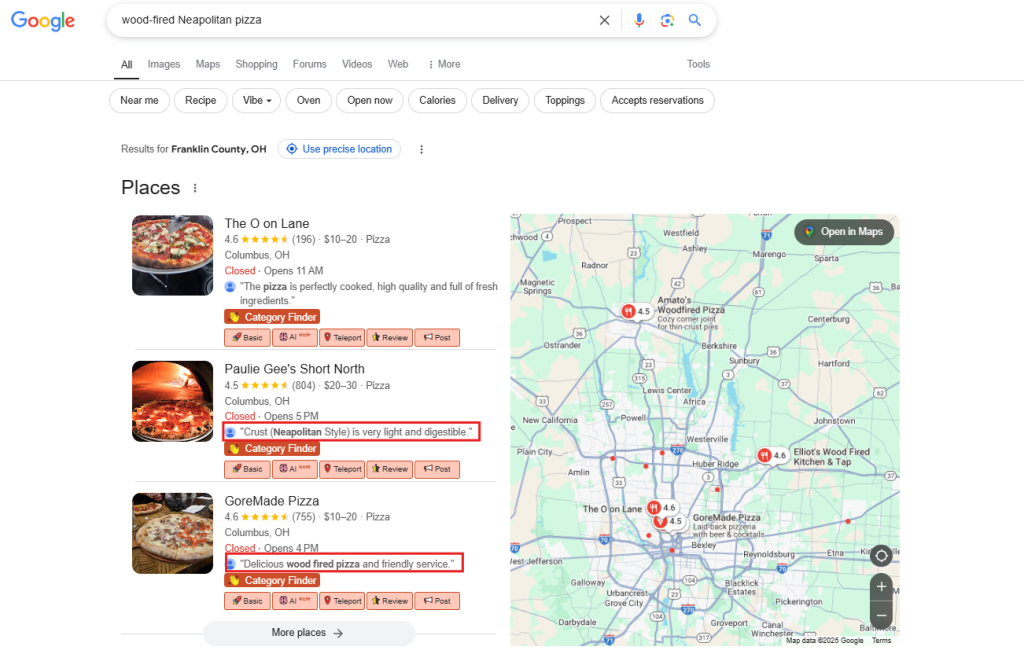
Turns out people might be searching for it.
- Optimized service listings: Instead of listing “haircuts” as your service, specify “men’s fades, women’s layers, children’s cuts, and color treatments.”
This detailed breakdown tells Google exactly which search queries your business should appear for.
- Create local content: Don’t just write a generic blog post about the “Top 10 Coffee Tips.”
Instead, create content about “The Best Coffee Beans from Portland Roasters” or “How Our Café Supported the Downtown Art Walk.” This locally relevant content signals to Google that you’re an active, integral part of your community.
3. Prominence:
This indicates how well-known and reputable your business is for Google local pack rankings. Google assesses prominence based on various factors, including online reviews, backlinks, and overall online presence.
- Online reviews: When the Thai restaurant down the street has 157 reviews and 4.8 stars and you have 3 reviews, guess who Google considers more established. To compete, ask every satisfied customer to leave a review and respond thoughtfully to their positive and negative reviews. The more reviews you have, the better for your local pack SEO.
- Local citations are your digital footprint: When your exact business name, address, phone number, and website URL (NAP-W) appear consistently across Yelp, TripAdvisor, Yellow Pages, and industry directories, Google gains confidence that you’re a legitimate, established business.
One study shows that business directories make up 31% of local-intent organic search results, with Yelp listings appearing in 28% of all directory results. Having consistent information across these platforms helps you dominate local search results.

- Backlinks: High-quality backlinks from reputable websites signal to Google that your business is authoritative and trustworthy. A link from a local newspaper is more valuable than 10 generic directory listings. So, focus on quality over quantity. Earn links from local news sites, blogs, and industry websites.
- Social media presence: Active and engaged Facebook and Instagram accounts signal to Google that you’re engaging your followers. It also indicates that your business is still active. So, post regular content and updates to engage followers and promote your digital footprint.
Now, how do you rank for local packs?
How to rank for the Google local map pack using SEO
Ready to push your business to the top of the local pack? Here’s what works:
1. Create a Google Business Profile
This is the foundational step to ranking your business in the Google pack for local queries. If you don’t have an account yet, visit Google Business Profile and click on the “Manage Now” button:
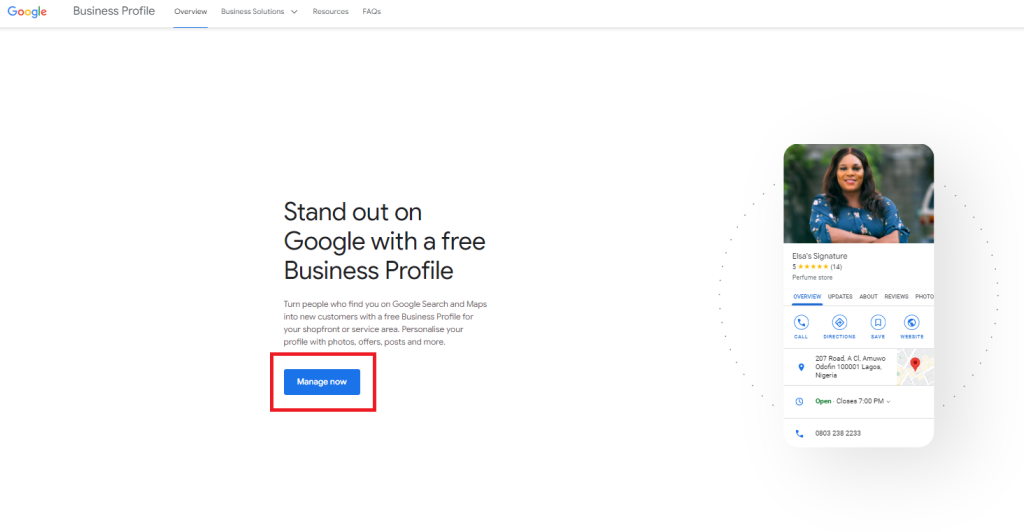
Next, follow the prompts to add all the required information about your business. This includes your contact information, website URL, working hours, and other vitals.
If you already have an account but it isn’t claimed, you’ll see this:

Claim and optimize your profile.
Tip: What happens if you don’t have a physical location? Not having a physical location means you operate a “service area business (SAB),” such as a plumbing, carpet cleaning services, etc.
In this case, specify the service areas where your business operates so you can rank for relevant queries from these different areas:
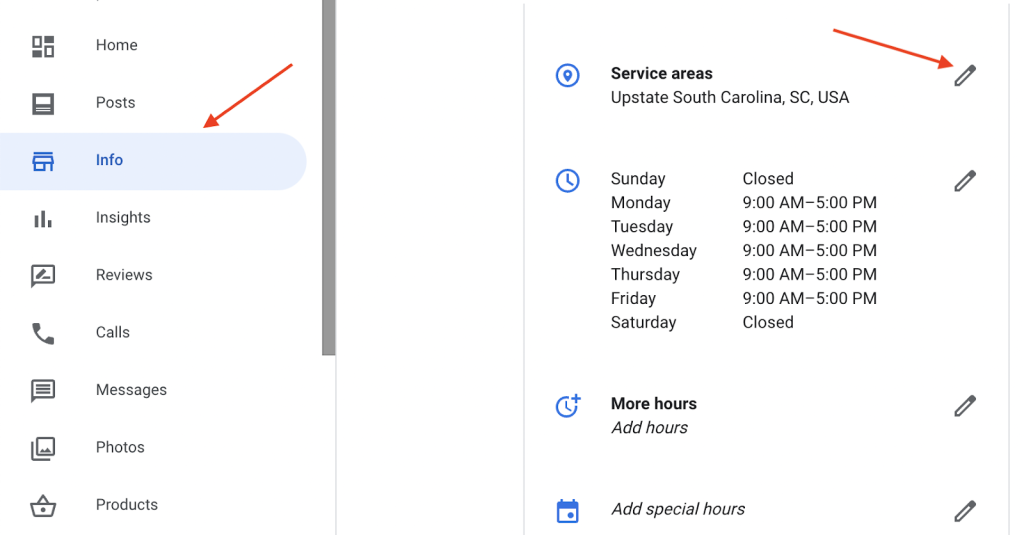
2. Optimize your listing
You must provide in-depth and accurate information about your business at this stage.
Remember that Google prioritizes businesses that provide details about their operation. These details include business name, description, service/product offerings, service areas and contact information.
“Google wants information,” says Kristal Taing, VP of Solutions at Uberall, in an interview with SERPs UP podcast. “They will reward businesses that have a complete profile. Why? This is because more searchers engage with this kind of information. Ultimately, they want to create a good customer experience, so they’ll surface profiles with complete data. So if Google gives you a field to complete something about your business, fill them out to your best.”
The more information you provide about your business, the higher your chances of securing a prominent position on the local search results.
Here are some best practices to follow:
- Fill out all the information on your profile as required. Don’t leave anything out except if you have to. Google advises the same:

- Weave keywords naturally in your profile to help Google understand your business.
For your business title, use the formula: “(your business name) + (target area)” like “Riverdale Dental – Bronx” or “(your business name) + (service offered) + (target area)” such as “Johnson Plumbing Emergency Services San Diego.”
This approach communicates your location and specialty to search engines and potential customers.
- Ensure that your business NAP-W are accurate and consistent across all online channels.
- Add high-quality visuals to increase engagement. More details on this are below.
- Use schema markup to appear on rich snippets and enhance your visibility on the local search results.
Adding categories:
GMB categories are part of the top ten factors that influence the local search results, ranking #1 and #7, respectively, according to this report from WhiteSpark:
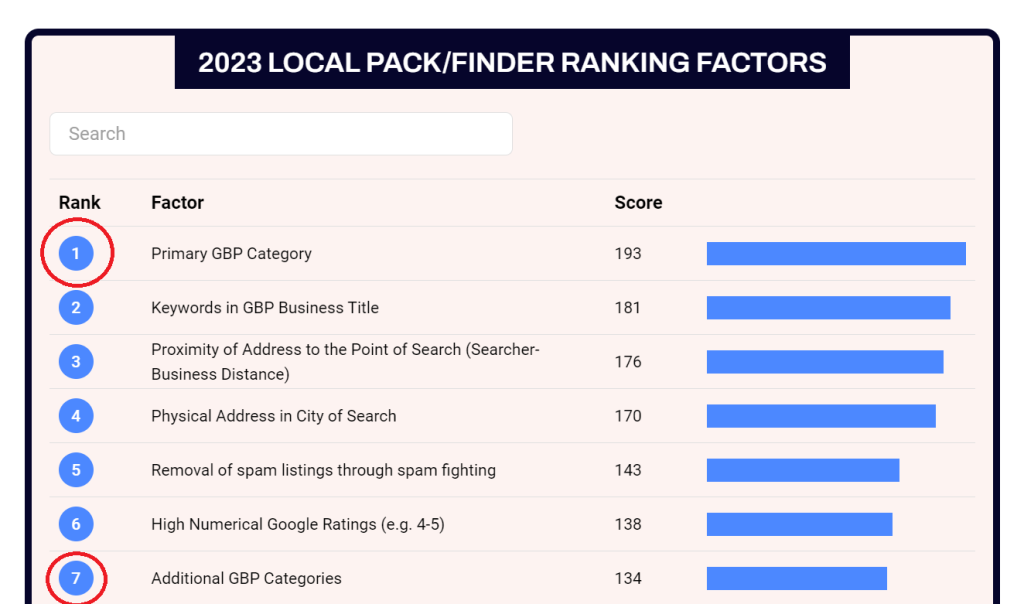
If you get the categories wrong, your chances of ranking on the local pack are slim. Here’s what to do:
Use GMB Everywhere to find out the categories your competitors are ranking for:

It also has a “Category Finder” tool that helps you select the top categories based on their search volume:
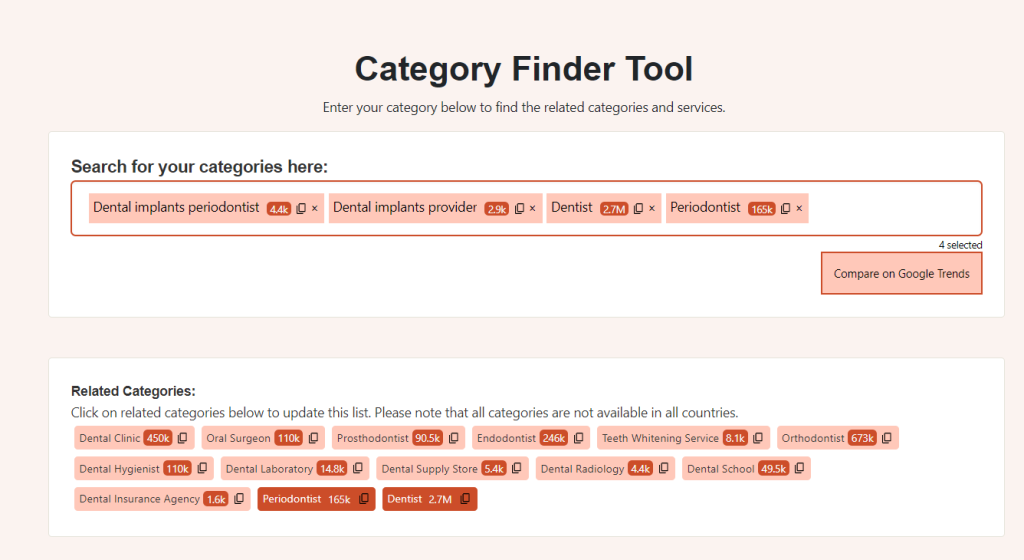
Next, list your top options and conduct keyword research to find the one with the highest search volume.
Tip: Add multiple relevant categories to your profile for maximum visibility. For a morning cafe open 7 AM-3 PM, don’t just select “Restaurant”—choose specific categories like “Breakfast Restaurant,” “Lunch Restaurant,” and “Brunch Restaurant” or other specific keywords in the category.
Also, the primary category on your GBP should align with your website title and headers. For example, if you’re using “Dentist in Miami” as your primary category, it should match your website headings to ensure consistency in messaging.

See their website landing page too:
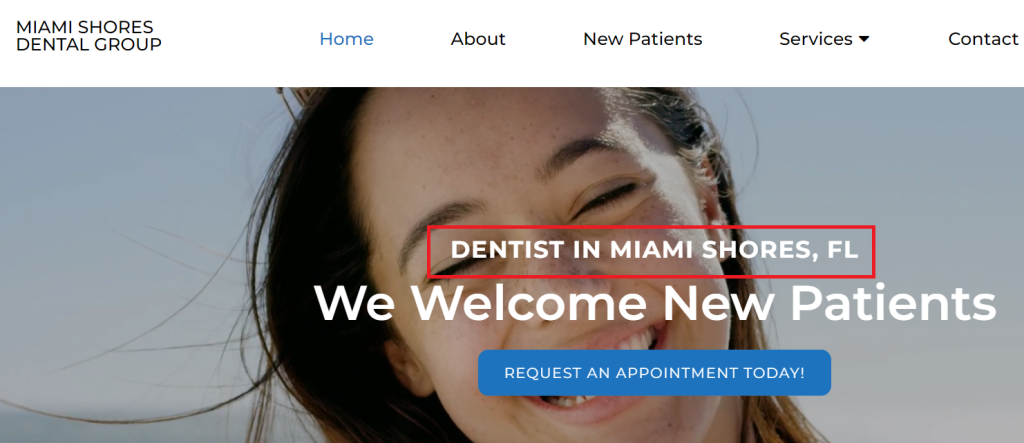
3. Get positive reviews from customers
Reviews validate the credibility of your business in the Google local map pack. They act as votes of confidence from satisfied customers and directly influence your conversion rates. The survey below shows that people will convert if there are positive sentiment in your reviews:
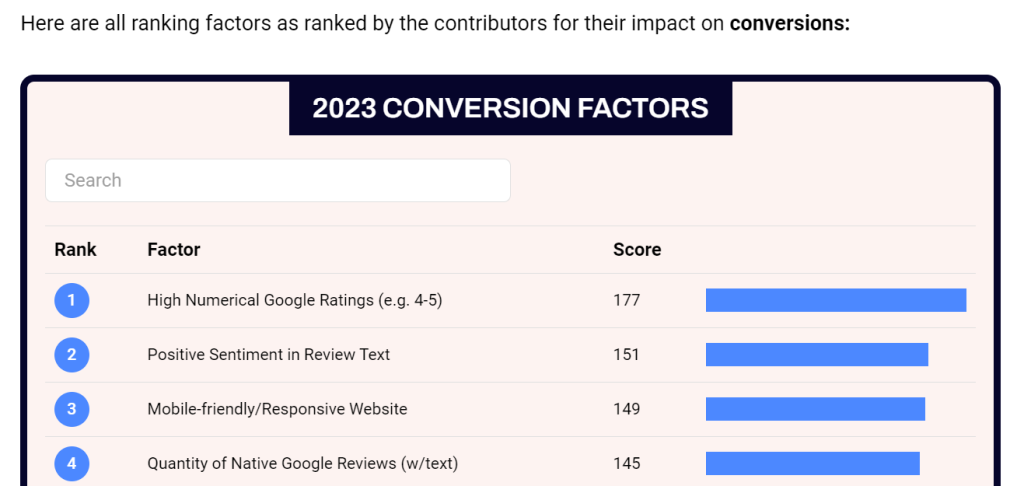
Reviews also create a virtuous cycle: the more positive they are, the higher your visibility and, ultimately, the more customers.
However, it’s not all about the volume. Google’s algorithm also examines the key phrases used in the review, such as mentions of specific services, products, or attributes. As you can see in the image above, “Positive Sentiment in Review Test” influences the local conversion rate.
For example, see this detailed review from a Andrew’s Coffee customers’. It highlights the coffee quality, cafe ambiance, and staff’s friendly demeanor. The cafe ranks #1 on the local map pack for “best coffee in FL.”

And:

Another thing you need to consider is the frequency at which customers leave reviews on your page. Research on Local Reviews from BrightLocal revealed that profiles with newer, updated reviews get more attention from potential customers and search engine algorithms than sites with older reviews.
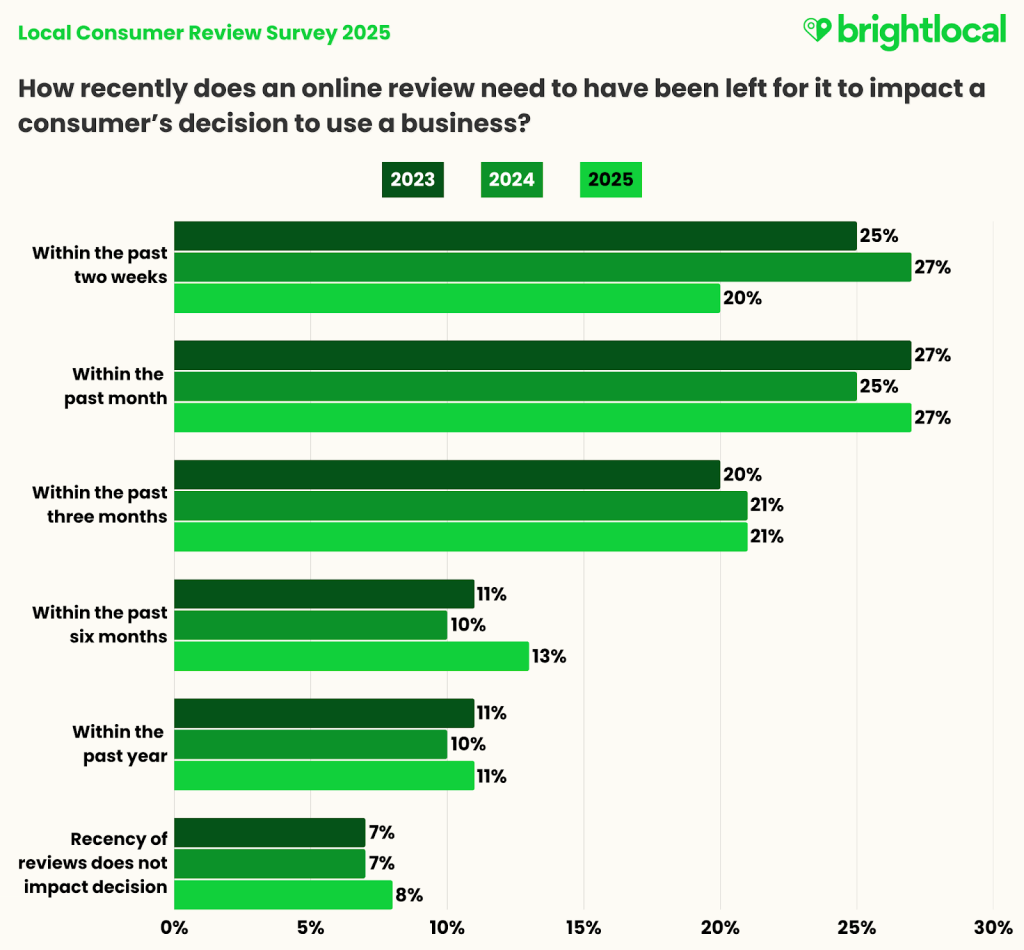
That said, create a robust review management system to collect and respond to customer reviews.
4. Target hyperlocal keywords
For successful local pack SEO, hyperlocal keywords zero in on extremely specific locations. Think neighborhoods, streets, or ZIP codes within a city.
While your competitors battle over ranking for “plumbers in Nevada,” you can capture ready-to-buy customers by targeting keywords like “plumbers in Henderson, Nevada” or even “emergency plumber Green Valley Ranch.”
These ultra-specific phrases signal high conversion intent. When someone searches “24-hour locksmith Tribeca,” they’re not researching—they’re standing outside their door, credit card in hand, ready to hire the first available professional.
Why are hyperlocal keywords necessary?
Google data reveals that “near me” searches increased by 150% in 2017 and have been on the rise ever since.
How to find hyperlocal keywords to rank for:
- The first step is to figure out the search queries you’re already ranking for. Log into your GMB profile and click ‘Insights >> See new profile performance.’ Scroll down to see the top search queries that triggered your business profile. The most searched keyword can be your primary keyword.

- Another option is conducting competitor analysis for SEO to identify keywords your competitors are ranking for. You can optimize for these keywords too.
- Use BrightLocal’s Google Data Studio Dashboard to find advanced keyword insights. This data combines insights from your Google Analytics and Search Console to visualize data in a much simpler and more organized format. Here, you have access to questions your potential customers are searching for and can filter based on impressions, CTR, and average position.

Read more: How to use BrightLocal’s Google Data Studio for keyword research.
How to use hyperlocal keywords:
- Use it in the business title. Keep it natural—Google discourages keyword stuffing, so stick to a 50-60 character limit to avoid keyword spamming.
- Use the keywords in your business description. Naturally weave in terms that local customers actually search for (e.g., “organic bakery in Coney Island” instead of “bakery”). Aim for a 200-750 character description that’s readable and compelling.
- Use question-based keywords in your Q&A section. Think like your customers—add FAQs like “Where can I find the best gluten-free pizza in Chicago?” to increase relevance for voice searches and long-tail queries.
You can also use this Q&A section to answer common queries they may have. We did the same thing here:

- Add keywords to service and product descriptions. Optimize listings with detailed, keyword-rich descriptions (e.g., instead of “We fix ACs,” say “24/7 emergency AC repair services in Austin, TX”). This helps Google match your business to local searches.
Read more: How to target buyer intent keywords.
5. Add attributes to rank for related keywords.
GBP attributes are specific features that improve your local pack SEO and help customers know exactly what to expect in your physical space. Think “wheelchair accessible entrance,” “women-owned business,” or “outdoor seating available.”
Here’s an example:

These descriptive tags create a positive feedback loop: detailed listings with relevant attributes attract more customers who leave more reviews (which improves your rankings). WhiteSpark’s research confirms that businesses using appropriate attributes rank higher in local pack results than those with minimal details.
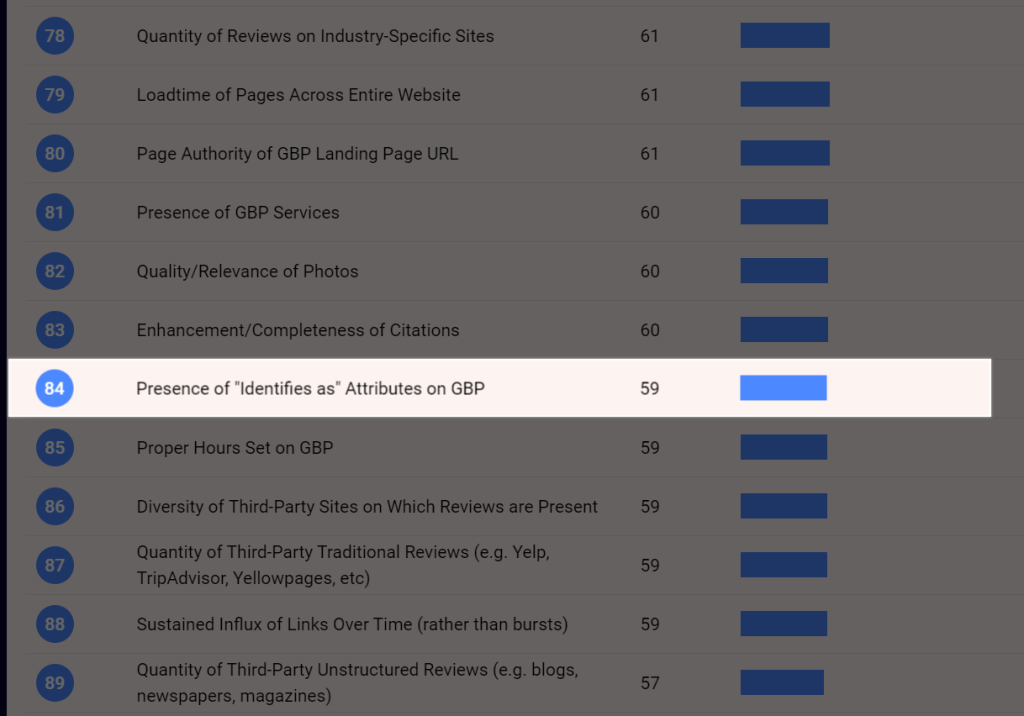
The best part is that you can add multiple attributes to your profile. However, this is determined by your preset primary category, as each category offers different attributes.
You may wonder, how does attributes help? See this example for the search query “women-owned businesses near me:”

Can you see how those attributes help?
How to add attributes to your GBP to improve local pack SEO
- Log into your GBP
- Click on “Online Presence >> Google Profile >> Add Attributes”
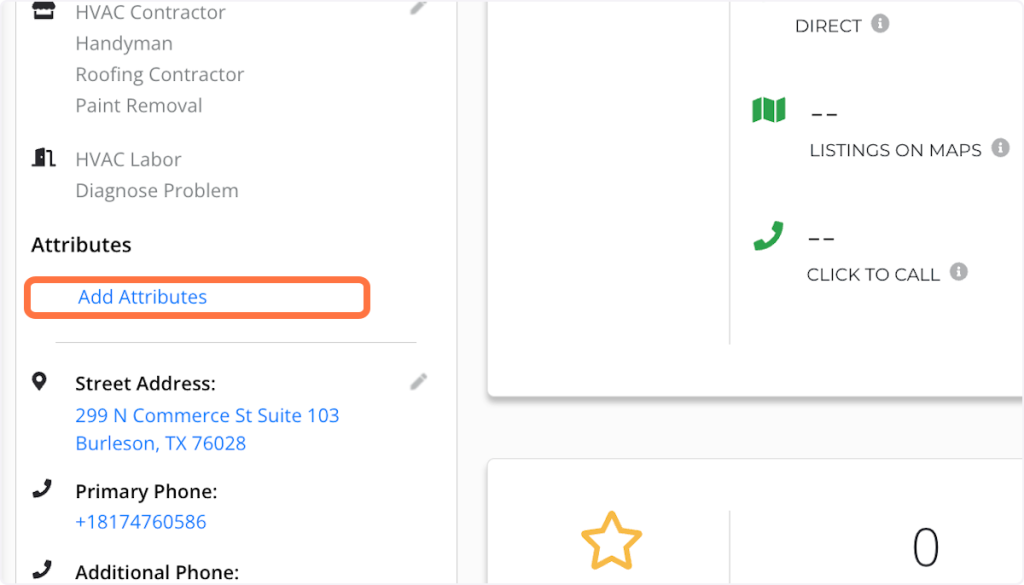
- Now, choose all attributes that accurately describe your business.
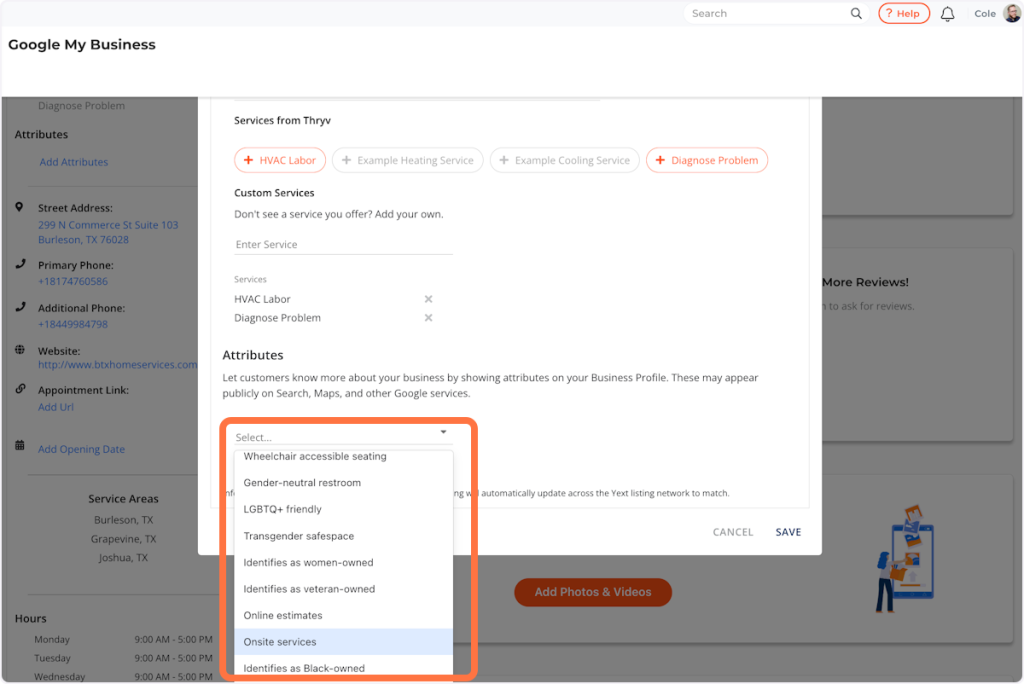
- Lastly, click “SAVE”
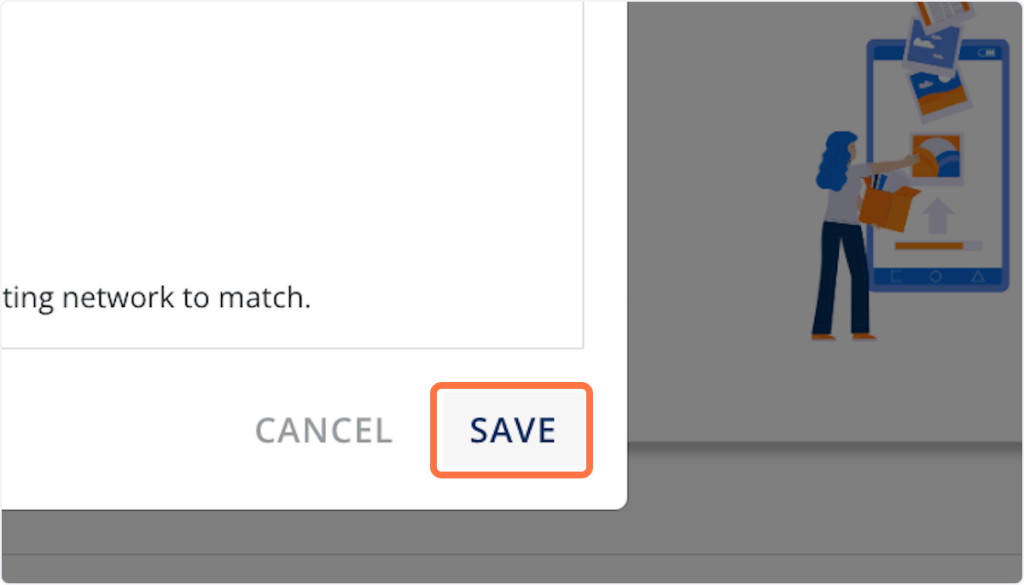
Tip: Spy on your competitors’ attributes using the PlePer tool, a local SEO tool that shows detailed information about each listing on the SERPs. It’s a Chrome extension, so you can easily install it on your website:

6. Add high-quality pictures and videos
High-quality photos and videos show your business’s credibility and increase your success on the local pack. It can increase click-through rates to your websites and requests for direction.
For videos, short-form content is great. As local search expert Kristal notes: “…Google is leaning towards short-form video content, and they’ve started ranking this really high. So, if you have a video on your profile, it’ll start displaying on the map pack in position two next to the images. Although it differs for different industries.”
Google says it too:

So, make the most of this opportunity by creating 30-second videos on what makes your business special. For example, a restaurant should capture chefs in action, preparing signature dishes.
A hotel might film a walkthrough of its most requested suite to show what it looks like, and a mechanic can capture a Ford vehicle repair process to show their expertise. These visual elements give potential customers confidence in your business before they visit.
7. Build relevant citations:
Citations are a vote of confidence for your business in the Google pack ecosystem. They prove your legitimacy and increase your relevance in the search results.
This study from Whitespark shows that citation signals account for 7% of local pack ranking factors:

So the more your listings on Google, the better.
Here are some tips that work:
- List your business on local directories and niche sites. Yelp, Yellow Pages, Angi, etc., are popular platforms to get started.
- Ensure your NAP-W details are accurate and consistent across all listings.
- Submit your business details to data aggregators such as Foursquare, Localeze, Factual, etc.
- Ensure you’re listed on industry-related citations, such as Trip Advisor if you’re in travel, realtor.com if you’re into real estate, etc.
You can scout this list from BrightLocal or conduct searches on Google, like (location) business directory or (industry) business listings. Here’s the ranking result for the latter:

Extra: Use paid tools such as LocaliQ, BrightLocal, or WhiteSpark to speed up the process and get listed on several online directories simultaneously. You can also use these platforms to fix NAP inconsistencies across all your online listings.
8. Link and build your social media pages:
Google recently added a new feature that allows you to link your social media profiles to your GBP:

This improves your listing visibility and encourages customer engagement. Sometimes, customers may decide to find you on social platforms, and you don’t want to come up empty or, worse, discover another business with a similar name.
9. Ensure your website is optimized for Google core web vitals
While your profile may rank in the Google local map pack, your website’s technical performance might affect your overall business success. Core Web Vitals—Google’s metrics for measuring user experience—directly influence your mobile performance. WhiteSpark’s research also confirms that on-page signals account for 24% of local organic ranking:
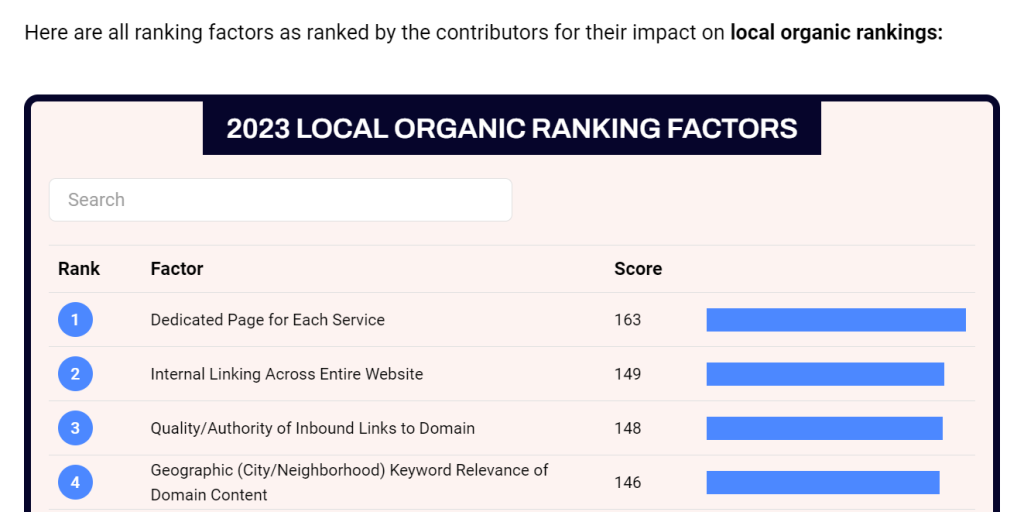
These metrics evaluate three aspects of your site:
- Loading speed (LCP should be under 2.5 seconds).
- Responsiveness (INP should be under 200ms).
- Visual stability (CLS should be less than 0.1).
Let’s discuss the core web vitals in detail:
Largest Contentful Paint (LCP) measures website performance (in terms of speed). Google advises to have LCP occur within the first 2.5s.

Interaction to Next Paint (INP) measures the page’s responsiveness to any device. The benchmark is INP less than 200ms.

Cumulative Layout Shift (CLS) measures visual stability and should be less than 0.1.

To know if your website adheres to this guideline, enter your URL using PageSpeed Insights. Here’s the result from a website:
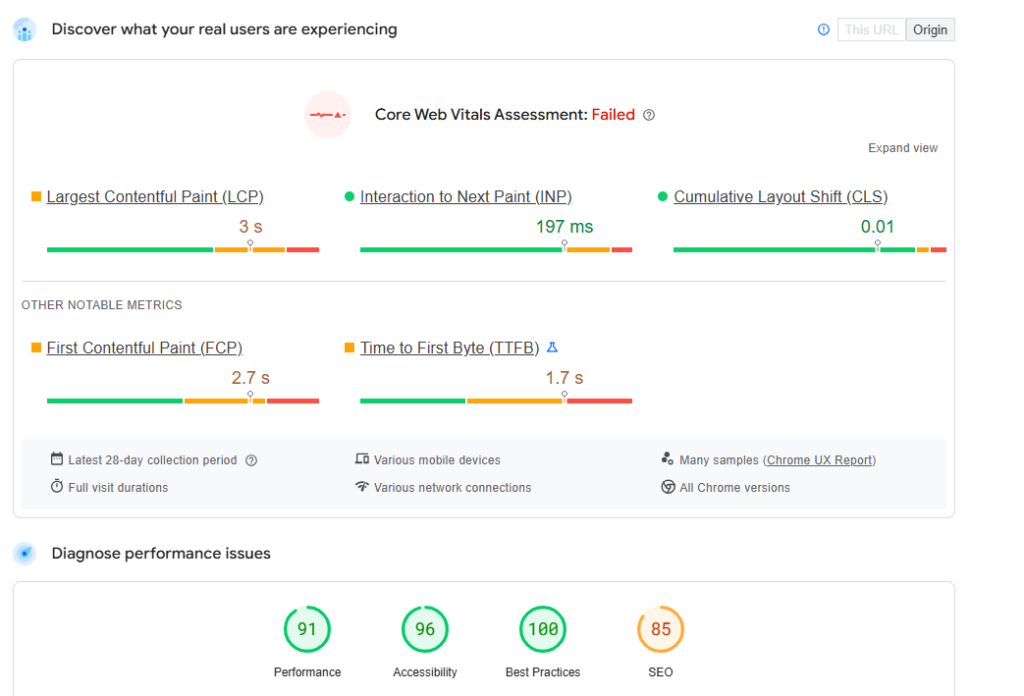
The next step is to conduct a site-wide audit using SEO tools such as Google Search Console, ScreamingFrog, SEMRush, and Ahrefs. A site-wide audit helps you identify specific technical issues that harm your site’s performance and local rankings.
Once you’ve identified the problems, take these steps to fix them:
- If you’re using a shared host, upgrade to higher plans for faster load times and improved server response.
- Compress web images to reduce file sizes by 40-70% without sacrificing quality. This increases load times, which equals faster page speeds.
- Allow page caching to decrease load time by saving static versions of your web pages on your web server or content delivery network (CDN). This eliminates the need to generate pages dynamically for each visitor.
- Add descriptive alt-texts to images and videos to improve accessibility and increase local keyword relevance.
- Minimize JavaScript code to reduce parsing time and speed up page rendering.
Beyond Core Web Vitals, implement these additional local optimization tactics:
- Create dedicated landing pages for each location you serve to target hyperlocal searches.
- Place localized keywords in titles, headings, and content to increase geographic relevance.
- Build a mobile-first website design, as 76% of local searches occur on mobile devices.
- Earn backlinks from neighboring businesses to strengthen your local authority signals.
- Participate in community events to generate local press coverage and attract natural backlinks.
- Publish locally-focused blog content about neighborhood news and issues to attract nearby customers.
Read more: Local SEO strategies to dominate near me searches.
10. Work with an SEO agency.
While DIY-ing your SEO may be tempting and cost-effective, it’s not the most effective in the long run if:
- SEO isn’t your strong suit.
- You’re too busy to monitor your ranking performance.
- You want to rank fast on the local map pack.
- You want to sustain your rankings on the map pack.
- You want to focus on actual business operations.
Working with an agency can prevent all the mistakes associated with the DIY process. Instead of trial and error, agencies have the expertise and resources to take you from where you are to where you want to be.
Although reputable agencies will not promise “#1 rankings” (a red flag in the industry), they will provide something more valuable: smart strategies backed by real data. At HigherVisibility, which has been named SEO Agency of the Year five times in six years, our specialists use custom approaches that have helped clients like Restoration Roofing increase organic leads by over 400%.
Unlike general marketing agencies, we understand the nuanced factors that influence Google local pack rankings. We:
- Identify what’s holding your business back through comprehensive audits.
- Optimize your GBP to rank for relevant local queries.
- Ensure citation consistency to help Google understand your business, and
- Fix technical website issues to improve your visibility on SERPs.
Ready to stop guessing and start ranking on Google local pack? Schedule a free consultation via call or email with our local SEO specialists today to get a custom strategy for your business.
